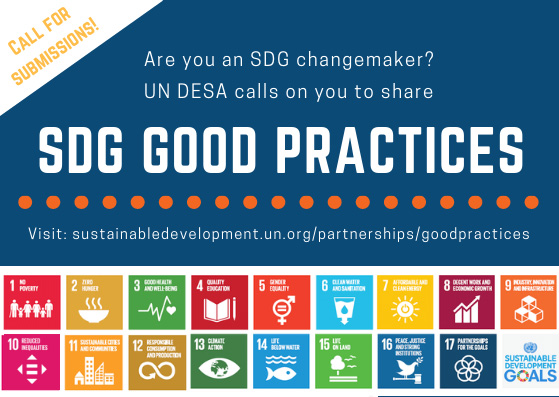Localizing SDGs through Ecosystem Services in Aruba
Description
SIDS are highly dependent on its coastal marine ecosystems for economy and well-being. The linkages between the benefits provided by nature (or ecosystem services) and sustainable development are poorly recognised and integrated in policy-making. Therefor the importance of nature for the achievement of SDGs is analysed and results communicated through a dashboard. This informs policy decisions on selected “SDG accelerators”. Each SDG accelerator is defined by a set of catalyst measures whose implementation addresses development priorities and have a multiplier effect across the SDGs. This solution (practical toolkit and dashboard) is replicable in SIDS.
Islands and SIDS have taken significant steps in nature conservation and policy making to fulfil international commitments (i.e. Convention of Biological Diversity and 2030 Agenda for Sustainable Development). However, one challenge to the implementation of these policies is that the benefits of investing and conserving healthy ecosystems for the achievement of national and global environmental and socioeconomic goals are neither sufficiently recognized or measured. Providing evidence to make the relationship visible could support more informed decision-making and facilitate greater access to public and private financing. To pilot a solution, Wolfs Company selected the Dutch Caribbean Island of Aruba. Aruba is a SIDS, and one of the Overseas Countries and Territories (OCTs) of The Netherlands Kingdom. Tourism represents 88% of Aruba’s GDP and the added value of nature for tourism is estimated at US$ 269 million/year. Aruba government is aware of the link between a healthy environment and the tourism sector, for which the coastal and marine ecosystems are the major attraction. Its concern towards rapid coastal developments that can impact these natural assets motivated the formulation of one of the SDGs accelerators to foster sustainable tourism by incentivising quality tourism and balanced development (Government of Aruba, 2018). Given the high importance of nature for the island, approaches to demonstrate the link between ESS and sustainable development and to increase their mainstreaming in policy and investment decisions are of utmost importance. Similar characteristics are shared by the other OCTs of The Netherlands, which make them the immediate potential beneficiaries of this solution, also replicable in other SIDS or Sub-National Island Jurisdictions. Aruba, multiple initiatives are taking place to operationalise the implementation of SDGs. In 2017, Aruban government institutionalised the work of the National SDG Commission and the SDG Aruba Indicator Working Group (IWG) -chaired by Aruba Central Bureau of Statistics (CBS)- with a ministerial decree. In 2018, the IWG released a Baseline measurement report for the Global Monitoring Indicators (GMIs). However, Aruba is aware of the importance of ‘localising’ and developing locally relevant SDG measurement indicators for the effective design, monitoring and management of its 2030 Agenda for Sustainable Development. Therefore, Aruba has drafted a Roadmap where intervention priorities are established through “SDG accelerators”. These are catalyst measures that tackle multiple development priorities at once. Investing in these allows to most efficiently allocate resources by achieving a multiplier effect and contributing to a greater number of SDGs targets and goals. UNDP guided the development of Aruba’s “accelerators”, with stakeholders’ consultation and a theory of change determining the path through which an accelerator can have maximum impact. Besides, Aruba organized its 2030 Agenda along five thematic pillars: People, Planet, Prosperity, Peace and Partnership. Specific working groups have been set up around these pillars to localize relevant indicators to monitor the SDGs in Aruba. Aruba Directorate of Nature and Environment (Directie Natuur en Milieu, DNM) leads the Planet working group.
Wolfs Company built a toolkit called Nature2SDGs to support policy-makers jointly mainstreaming ESS and SDGs in development policies, investments and management options in 5 steps.
Step 1: Establish policy objective ‘What is the objective and added value of the toolkit application for users?’. Once the objective is established, it is important to assess who to involve in the analysis, what expertise is needed and where to gather reliable and/or qualitative data during all the steps.
Step 2: Determine and assess priority SDGs. The toolkit application focuses on understanding the contribution of ecosystem services to SDGs according to local government stated priorities.
2.1 Determine priority SDGs for the SIDS or the island in question. Priority SDGs for SIDS were ‘pre-selected’ based on an extensive literature review and the analysis of the number of SIDS partnerships working towards SDG achievement. As an outcome of the review and analysis, 9 SDGs (and more concisely, 28 SDG targets) were selected.
2.2 Identify interlinkages among priority SDGs. Policy makers need to consider the interconnections between SDGs, their synergies and their trade-offs. Identifying and understanding their linkages is an indispensable prerequisite for coherent and effective policies, strategies and monitoring.
2.3 Determine current level of priority SDG achievement. ‘What has been achieved so far?’ and ‘What shall be achieved?’. Identifying the current level of target achievement is also important for the prioritization of goals, as priority can be placed on those SDGs where progress is lacking. Baseline measurements are an important tool to assess the current state on national level.
Step 3: Identify priority ESS for SDGs. On the basis of the priority SDGs determined for the local context (9 SDGs, and particularly 28 SDG targets), priority ESS with a direct or indirect link with these SDG targets achievement was shortlisted according to expert criteria (10 ESS). A very detailed questionnaire was developed to gather stakeholders’ opinions of ‘How important are Ecosystem Services for the achievement of SDG targets?’. The pioneer research by Wood et al. (2018) was used as a methodological base.
Step 4: Assess socioeconomic value of priority ESS for SDGs. A wide array of methodologies with different levels of complexity can be applied to assess the socioeconomic value or importance of ESS. These include, e.g. the use of remote sensing techniques and geographic information systems, the analysis of primary data from tailored questionnaires, participatory mapping, and so on.
Step 5: Capture ESS-SDG links in a data index and facilitate change. Available financial, technical and institutional capacities, and human resources play a decisive role integrating the value and sustainable management of ESS in legislation, policies or investments. a result of processing the outcomes of the four previous steps, a shortlist of indicators (Aruba Data Index) is obtained. The strategy to validate the Aruba Data Index at the island level required DNM taking ownership of it.
Aruba provides metrics of the socio-economic value of fisheries. Additionally, socioeconomic data on nature-based tourism, identified by international stakeholders as important for the achievement of SDG 8.9. were provided; and on how Arubans perceive the importance of nature for cultural and recreational activities and their well-being.
The final purpose of the data index and dashboard is to inform investments and policy making decisions on Aruba 2030 Roadmap SDG accelerators. The 3 SDGs accelerators were shortlisted. Aruba government wants to improve natural resources management by incentivising sustainable use of oceans and coastal assets and addressing emerging threats to coral reefs conservation
•Creation/Expansion of Marine Protected Areas (MPAs)
•Ensuring sustainable finance mechanisms for MPA management
•Fostering sustainable fisheries
•Sustainable Tourism (pillar Prosperity)
Aruba government is aware of the link between a healthy environment and the tourism sector, for which the coastal and marine ecosystems are the major attraction. Government is also aware of rapid coastal development which impacts the natural assets that support tourism.
The following 3 SDGs are considered to fundamentally benefit from each accelerator’s set of measures:
‘SDG 14 – Life below water’ benefits from ‘Improved natural resources management’ accelerator.
‘SDG 8 – Economic growth and decent work’ benefits from ‘Sustainable Tourism’ accelerator.
‘SDG 3 – Good health and well-being’ benefits from ‘Improved quality of life and well-being’ accelerator.
‘Value of fisheries’ for the assessment of ‘SDG 14 – Life below water’. \
‘Value of nature-based tourism’ for the assessment of ‘SDG 8 – Economic growth and decent work’. \
‘Importance of local, cultural and recreational services’ for the assessment of ‘SDG 3 – Good health and well-being’.
Value of ESS indicators and baseline values were sourced from van Zanten et al., 2018; Polaszek et al., 2018; Wolfs et al., 2018. Contribution ES-SDG target was sourced from the conclusions of the consultation process (toolkit step 3). Aruba SDG accelerators were sourced from Aruba 2030 Roadmap
Creating insight in the contribution of natural capital to achieve certain SDGs is groundbreaking. Based on this insight a monitoring and measurement dashboard has been implemented to support local governments in monitoring their progress to achieving SDG by guiding their policy through these tools.<br />
<br />
Anticipate lack of data and identify and program ways to collect information on the value of ESS, either through tailored studies or using information from previous ESS valuation studies. For the application of the toolkit in Aruba, the TEEB study was a cornerstone. To facilitate mainstreaming the solution, it is key to have a good understanding of: the likely existing on-going on-site process to select and localise SDG indicators; and the governance structure and timings that rule the selection of SDG indicators. Gather information about these during the consultation process and foster key stakeholders gaining ownership of the data index. It should be noted that the up-take of this kind of island data is likely subject to long discussion processes between national statisticians. Whenever possible, found the application of the toolkit on policy decisions back-supported by former consultation processes. In Aruba, the application of the toolkit sits on the 2030 Roadmap for the island, namely, on the SDGs accelerators. Tailor the data index to the island site and find a compromise between data availability and most suited data to inform the policy in question to shortlist adequate indicators. In Aruba, the selection of indicators was determined by the consultation process, the data available from the TEEB study, and their suitability to inform Aruba’s SDGs accelerators. Develop the dashboard side-to-side to an existing one. This will facilitate the communication and dissemination of results as the audience is already familiar with the existing platform.
TEEB Aruba, Aruba’s Value of Nature.
TEEB infographic
Presentation Bogotá during SDG conference
Aruba National Indicator Working Group, IWG (2018). Aruba Sustainable Development Goals. Baseline measurement 2018.
And many references available
SDGS & Targets
Deliverables & Timeline
Resources mobilized
Partnership Progress
| Name | Description |
|---|---|
| 14.2 | By 2020, sustainably manage and protect marine and coastal ecosystems to avoid significant adverse impacts, including by strengthening their resilience, and take action for their restoration in order to achieve healthy and productive oceans |
| 14.4 | By 2020, effectively regulate harvesting and end overfishing, illegal, unreported and unregulated fishing and destructive fishing practices and implement science-based management plans, in order to restore fish stocks in the shortest time feasible, at least to levels that can produce maximum sustainable yield as determined by their biological characteristics |
| 14.7 | By 2030, increase the economic benefits to Small Island developing States and least developed countries from the sustainable use of marine resources, including through sustainable management of fisheries, aquaculture and tourism |
Feedback
Action Network


Timeline
Entity
Region
- Latin America and the Caribbean
Geographical coverage
Website/More information
Countries

Contact Information
Esther Wolfs, Senior Partner
